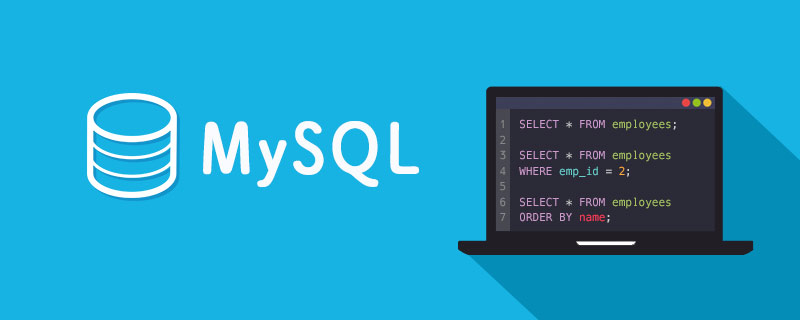優雅的統計訂單收益(二)

引言
上篇文章詳細說明了異構出收益日報表的方案.接下來我們來解決聚合需求多的情況下如何優化聚合SQL的問題.
需求
在如何優雅統計訂單收益(一)中已經詳細說明,大概就是些日/月/年的收益統計.
思考
目標
儘量減少聚合SQL的查詢次數 給前端方便展示的API資料,表現在如果某一天的資料為空值時,後端處理成收益為0資料給前端 方法函數儘量通用提高程式碼品質
思路
初步實現
建立在已經通過canal異構出收益日統計表的情況下:
單日統計(例如今日,昨日,精確日期)可以直接通過日期鎖定一條資料返回. 月統計也可以通過時間過濾出當月的資料進行聚合統計. 年統計也通過日期區間查詢出所在年份的統計實現. 各項收益也可以分別進行聚合查詢
這樣看來日統計表的異構是有價值的,至少可以解決當前的所有需求.
如果需要今日/昨日/上月/本月的收益統計,用SQL直接聚合查詢,則需要分別查詢今日,昨日以及跨度為整月的資料集然後通過SUM聚合實現.
CREATE TABLE `t_user_income_daily` ( `id` int(11) NOT NULL AUTO_INCREMENT COMMENT '主鍵', `user_id` int(11) NOT NULL COMMENT '使用者id', `day_time` date NOT NULL COMMENT '日期', `self_purchase_income` int(11) DEFAULT '0' COMMENT '自購收益', `member_income` int(11) DEFAULT '0' COMMENT '一級分銷收益', `affiliate_member_income` int(11) DEFAULT '0' COMMENT '二級分銷收益', `share_income` int(11) DEFAULT '0' COMMENT '分享收益', `effective_order_num` int(11) DEFAULT '0' COMMENT '有效訂單數', `total_income` int(11) DEFAULT '0' COMMENT '總收益', `update_time` datetime DEFAULT NULL COMMENT '更新時間', PRIMARY KEY (`id`) ) ENGINE=InnoDB AUTO_INCREMENT=20 DEFAULT CHARSET=utf8 COMMENT='使用者收益日統計'
這種寫法如果介面需要返回今日/昨日/上月/本月的收益統計時,就需要查詢4次SQL才可以實現.寫法沒問題,但是不是最優解?可以用更少的SQL查詢麼?
觀察
通過觀察分析,今日/昨日/上月/本月統計存在共同的交集,它們都處於同一個時間區間(上月一號-本月月末),那我們可以通過SQL直接查出這兩個月的資料,再通過程式聚合就可以輕鬆得出我們想要的資料.
優化實現
補充一下收益日統計表設計
select * from t_user_income_daily where day_time BETWEEN '上月一號' AND '本月月末' and user_id=xxx
查詢出兩個月的收益
select * from t_user_income
為了減少表的資料量,如果當日沒有收益變動是不會建立當日的日統計資料的,所以這裡只能查詢出某時間區間使用者有收益變動的收益統計資料.如果處理某一天資料為空的情況則還需要再程式中特殊處理.此處有小妙招,在資料庫中生成一張時間輔助表.以天為單位,存放各種格式化後的時間資料,輔助查詢詳細操作可見這篇博文Mysql生成時間輔助表.有了這張表就可以進一步優化這條SQL.時間輔助表的格式如下,也可修改儲存過程,加入自己個性化的時間格式.
SELECT
a.DAY_ID day_time,
a.MONTH_ID month_time,
a.DAY_SHORT_DESC day_time_str,
CASE when b.user_id is null then #{userId} else b.user_id end user_id,
CASE when b.self_purchase_income is null then 0 else b.self_purchase_income end self_purchase_income,
CASE when b.member_income is null then 0 else b.member_income end member_income,
CASE when b.affiliate_member_income is null then 0 else b.affiliate_member_income end affiliate_member_income,
CASE when b.share_income is null then 0 else b.share_income end share_income,
CASE when b.effective_order_num is null then 0 else b.effective_order_num end effective_order_num,
CASE when b.total_income is null then 0 else b.total_income end total_income
FROM
t_day_assist a
LEFT JOIN t_user_income_daily b ON b.user_id = #{userId}
AND a.DAY_SHORT_DESC = b.day_time
WHERE
STR_TO_DATE( a.DAY_SHORT_DESC, '%Y-%m-%d' ) BETWEEN #{startTime} AND #{endTime}
ORDER BY
a.DAY_ID DESC思路很簡單,用時間輔助表左關聯需要查詢的收益日統計表,關聯欄位就是day_time時間,如果沒有當天的收益資料,SQL中也會有日期為那一天但是統計資料為空的資料,用casewhen判空賦值給0,最後通過時間倒序,便可以查詢出一套完整時間區間統計.
最終實現
以SQL查詢出的資料為基礎.在程式中用stream進行聚合. 舉例說明一些例子,先從簡單的開始
常用靜態方法封裝
/**
* @description: 本月的第一天
* @author: chenyunxuan
*/
public static LocalDate getThisMonthFirstDay() {
return LocalDate.of(LocalDate.now().getYear(), LocalDate.now().getMonthValue(), 1);
}
/**
* @description: 本月的最後一天
* @author: chenyunxuan
*/
public static LocalDate getThisMonthLastDay() {
return LocalDate.now().with(TemporalAdjusters.lastDayOfMonth());
}
/**
* @description: 上個月第一天
* @author: chenyunxuan
*/
public static LocalDate getLastMonthFirstDay() {
return LocalDate.of(LocalDate.now().getYear(), LocalDate.now().getMonthValue() - 1, 1);
}
/**
* @description: 上個月的最後一天
* @author: chenyunxuan
*/
public static LocalDate getLastMonthLastDay() {
return getLastMonthFirstDay().with(TemporalAdjusters.lastDayOfMonth());
}
/**
* @description: 今年的第一天
* @author: chenyunxuan
*/
public static LocalDate getThisYearFirstDay() {
return LocalDate.of(LocalDate.now().getYear(), 1, 1);
}
/**
* @description: 分轉元,不支援負數
* @author: chenyunxuan
*/
public static String fenToYuan(Integer money) {
if (money == null) {
return "0.00";
}
String s = money.toString();
int len = s.length();
StringBuilder sb = new StringBuilder();
if (s != null && s.trim().length() > 0) {
if (len == 1) {
sb.append("0.0").append(s);
} else if (len == 2) {
sb.append("0.").append(s);
} else {
sb.append(s.substring(0, len - 2)).append(".").append(s.substring(len - 2));
}
} else {
sb.append("0.00");
}
return sb.toString();
}指定月份收益列表(按時間倒序)
public ResponseResult selectIncomeDetailThisMonth(int userId, Integer year, Integer month) {
ResponseResult responseResult = ResponseResult.newSingleData();
String startTime;
String endTime;
//不是指定月份
if (null == year && null == month) {
//如果時間為當月則只顯示今日到當月一號
startTime = DateUtil.getThisMonthFirstDay().toString();
endTime = LocalDate.now().toString();
} else {
//如果是指定年份月份,用LocalDate.of構建出需要查詢的月份的一號日期和最後一天的日期
LocalDate localDate = LocalDate.of(year, month, 1);
startTime = localDate.toString();
endTime = localDate.with(TemporalAdjusters.lastDayOfMonth()).toString();
}
//查詢用通用的SQL傳入使用者id和開始結束時間
List<UserIncomeDailyVO> userIncomeDailyList = selectIncomeByTimeInterval(userId, startTime, endTime);
/給前端的資料需要把資料庫存的分轉為字串,如果沒有相關需求可跳過直接返回
List<UserIncomeStatisticalVO> userIncomeStatisticalList = userIncomeDailyList.stream()
.map(item -> UserIncomeStatisticalVO.builder()
.affiliateMemberIncome(Tools.fenToYuan(item.getAffiliateMemberIncome()))
.memberIncome(Tools.fenToYuan(item.getMemberIncome()))
.effectiveOrderNum(item.getEffectiveOrderNum())
.shareIncome(Tools.fenToYuan(item.getShareIncome()))
.totalIncome(Tools.fenToYuan(item.getTotalIncome()))
.dayTimeStr(item.getDayTimeStr())
.selfPurchaseIncome(Tools.fenToYuan(item.getSelfPurchaseIncome())).build()).collect(Collectors.toList());
responseResult.setData(userIncomeStatisticalList);
return responseResult;
}今日/昨日/上月/本月收益
public Map<String, String> getPersonalIncomeMap(int userId) {
Map<String, String> resultMap = new HashMap<>(4);
LocalDate localDate = LocalDate.now();
//取出上個月第一天和這個月最後一天
String startTime = DateUtil.getLastMonthFirstDay().toString();
String endTime = DateUtil.getThisMonthLastDay().toString();
//這條查詢就是上面優化過的SQL.傳入開始和結束時間獲得這個時間區間使用者的收益日統計資料
List<UserIncomeDailyVO> userIncomeDailyList = selectIncomeByTimeInterval(userId, startTime, endTime);
//因為這裡需要取的都是總收益,所以封裝了returnTotalIncomeSum方法,用於傳入條件返回總收益聚合
//第二個引數就是篩選條件,只保留符合條件的部分.(此處都是用的LocalDate的API)
int today = returnTotalIncomeSum(userIncomeDailyList, n -> localDate.toString().equals(n.getDayTimeStr()));
int yesterday = returnTotalIncomeSum(userIncomeDailyList, n -> localDate.minusDays(1).toString().equals(n.getDayTimeStr()));
int thisMonth = returnTotalIncomeSum(userIncomeDailyList, n ->
n.getDayTime() >= Integer.parseInt(DateUtil.getThisMonthFirstDay().toString().replace("-", ""))
&& n.getDayTime() <= Integer.parseInt(DateUtil.getThisMonthLastDay().toString().replace("-", "")));
int lastMonth = returnTotalIncomeSum(userIncomeDailyList, n ->
n.getDayTime() >= Integer.parseInt(DateUtil.getLastMonthFirstDay().toString().replace("-", ""))
&& n.getDayTime() <= Integer.parseInt(DateUtil.getLastMonthLastDay().toString().replace("-", "")));
//因為使用者端顯示的是兩位小數的字串,所以需要用Tools.fenToYuan把數值金額轉換成字串
resultMap.put("today", Tools.fenToYuan(today));
resultMap.put("yesterday", Tools.fenToYuan(yesterday));
resultMap.put("thisMonth", Tools.fenToYuan(thisMonth));
resultMap.put("lastMonth", Tools.fenToYuan(lastMonth));
return resultMap;
}
//傳入收益集合以及過濾介面,返回對應集合資料,Predicate介面是返回一個boolean型別的值,用於篩選
private int returnTotalIncomeSum(List<UserIncomeDailyVO> userIncomeDailyList, Predicate<UserIncomeDailyVO> predicate) {
return userIncomeDailyList.stream()
//過濾掉不符合條件的資料
.filter(predicate)
//把流中對應的總收益欄位取出
.mapToInt(UserIncomeDailyVO::getTotalIncome)
//聚合總收益
.sum();
}擴充套件returnTotalIncomeSum函數,mapToInt支援傳入ToIntFunction引數的值.
private int returnTotalIncomeSum(List<UserIncomeDailyVO> userIncomeDailyList, Predicate<UserIncomeDailyVO> predicate,ToIntFunction<UserIncomeDailyVO> function) {
return userIncomeDailyList.stream()
//過濾掉不符合條件的資料
.filter(predicate)
//把流中對應的欄位取出
.mapToInt(function)
//聚合收益
.sum();
例如:
今日分享的金額,function引數傳入`UserIncomeDailyVO::getShareIncome`
今日自購和分享的金額,funciton引數傳入`userIncomeDailyVO->userIncomeDailyVO.getShareIncome()+userIncomeDailyVO.getSelfPurchaseIncome()`
}今年的收益資料(聚合按月展示)
我們先來了解一下stream的聚合 語法糖:
list.stream().collect(
Collectors.groupingBy(分組欄位,
Collectors.collectingAndThen(Collectors.toList(),
list -> {分組後的操作})
));流程圖: 程式碼範例:
程式碼範例:
public ResponseResult selectIncomeDetailThisYear(int userId) {
ResponseResult responseResult = ResponseResult.newSingleData();
List<UserIncomeStatisticalVO> incomeStatisticalList = new LinkedList<>();
//開始時間為今年的第一天
String startTime = DateUtil.getThisYearFirstDay.toString();
//區間最大時間為今日
String endTime = LocalDate.now().toString();
//通用SQL
List<UserIncomeDailyVO> userIncomeDailyList = selectIncomeByTimeInterval(userId, startTime, endTime);
//運用了stream的聚合,以月份進行分組,分組後用LinkedHashMap接收防止分組後月份順序錯亂,完畢後再把得到的每個月的收益集合流進行聚合並組裝成最終的實體返回
Map<Integer, UserIncomeStatisticalVO> resultMap = userIncomeDailyList.parallelStream()
.collect(Collectors.groupingBy(UserIncomeDailyVO::getMonthTime, LinkedHashMap::new,
Collectors.collectingAndThen(Collectors.toList(), item -> UserIncomeStatisticalVO.builder()
.affiliateMemberIncome(Tools.fenToYuan(item.stream().mapToInt(UserIncomeDailyVO::getAffiliateMemberIncome).sum()))
.memberIncome(Tools.fenToYuan(item.stream().mapToInt(UserIncomeDailyVO::getMemberIncome).sum()))
.effectiveOrderNum(item.stream().mapToInt(UserIncomeDailyVO::getEffectiveOrderNum).sum())
.shareIncome(Tools.fenToYuan(item.stream().mapToInt(UserIncomeDailyVO::getShareIncome).sum()))
.totalIncome(Tools.fenToYuan(item.stream().mapToInt(UserIncomeDailyVO::getTotalIncome).sum()))
.monthTimeStr(item.stream().map(time -> {
String timeStr = time.getMonthTime().toString();
return timeStr.substring(0, timeStr.length() - 2).concat("-").concat(timeStr.substring(timeStr.length() - 2));
}).findFirst().get())
.selfPurchaseIncome(Tools.fenToYuan(item.stream().mapToInt(UserIncomeDailyVO::getSelfPurchaseIncome).sum())).build()))
);
resultMap.forEach((k, v) -> incomeStatisticalList.add(v));
responseResult.setData(incomeStatisticalList);
return responseResult;
}總結
本文主要介紹了在統計收益時,一些SQL的優化小技巧和JDK中stream聚合.
總結下來就是在業務量逐漸增大時,儘量避免多次大數量量表的查詢聚合,可以分析思考後用盡量少的聚合查詢完成,一些簡單的業務也可以直接程式聚合.避免多次資料庫查詢的開銷.在使用者端返回介面需要時間完整性時,可以考慮時間輔助表進行關聯,可以減少程式計算空值判空操作,優化程式碼的品質.
相關免費學習推薦:(視 頻)
以上就是優雅的統計訂單收益(二)的詳細內容,更多請關注TW511.COM其它相關文章!